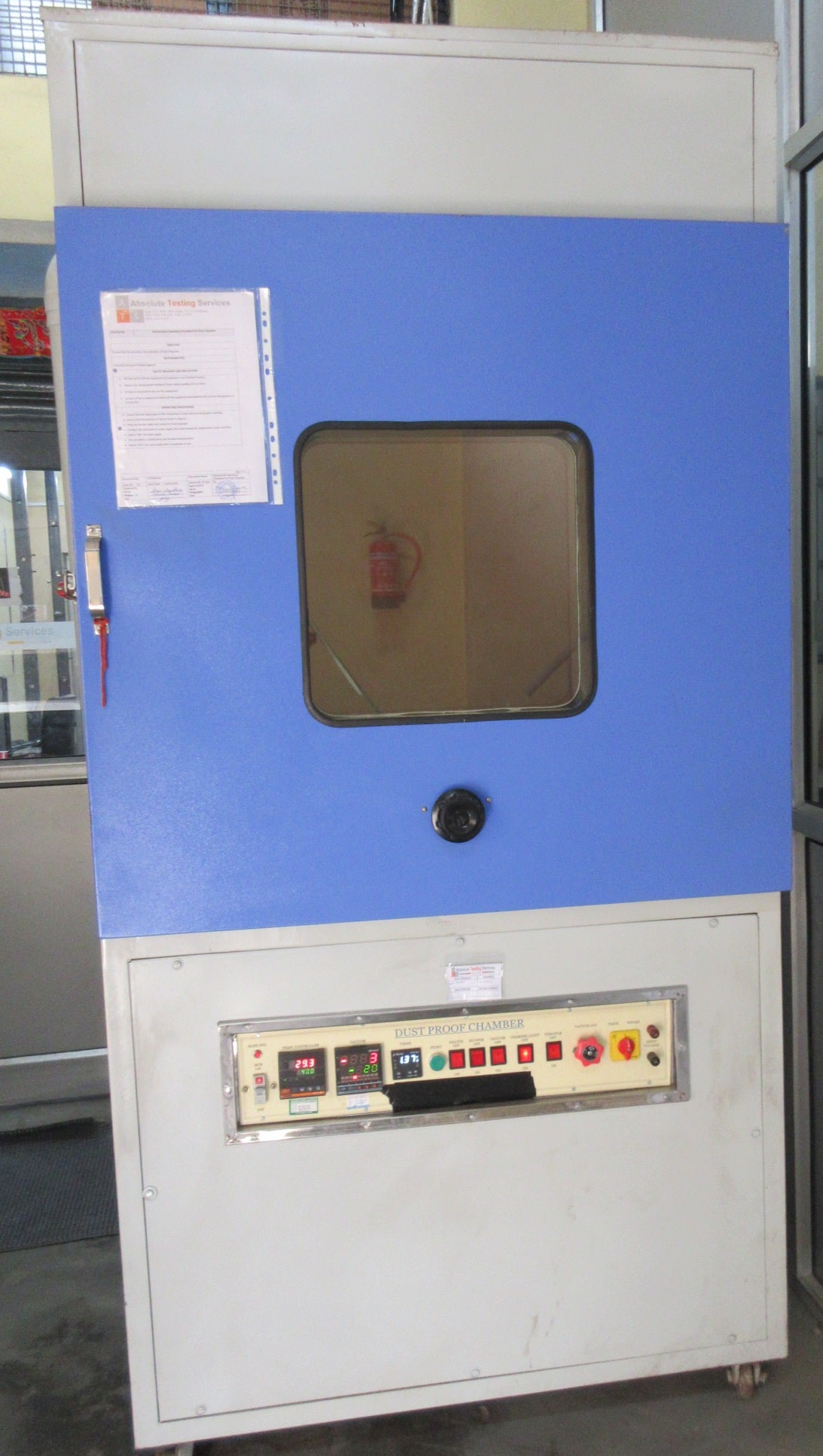Ingress Protection (IP) Testing:
A-TS have state of art testing facility Ingress Protection (IP) Testing.
Ingress Protection (IP) Testing helps to determine a product’s susceptibility to solid particle (including
dust) ingress and liquid (water) ingress. Within the IEC 60529 standard there is an international
classification system to test the sealing effectiveness of enclosures of electrical equipment against the
intrusion of solid particles and liquid.
How is IP Rating denoted?
- IP – IP is the Code letters
- X – First Characteristics numeral – Dust Protection (numerals 0-6 or latter X)
- X – Second Characteristics numeral – Water Protection (numeral 0-8 or latter X)
- C – Additional Latter – optional, letters A, B, C, D
- H – Supplementary letters – optional, letters H, M, S, W

Why Ingress Protection Testing (IP testing) is required?
To assess the protection of the equipment against ingress of solid bodies and/or liquids
such as sand, dust, and water.
Classification system for Ingress Progress rating, solid objects and liquids.
Protection Against Ingress of Foreign Objects/ Dust protection

| DEGREE OF PROTECTION | PROTECTED AGAINST | DEFINITION |
|---|---|---|
| IP0X | Non-protected | -- |
| IP1X | Access to hazardous parts with the back of a hand Solid foreign objects of > 50 mm. | An access probe, sphere of 50 mm, shall have adequate clearance from hazardous parts. An object probe, sphere of 50 mm, shall not fully penetrate. |
| IP2X | Access to hazardous parts with finger. Solid foreign objects of > 12.5 mm. |
A jointed test finger of 12 mm, 80 mm length, shall have adequate clearance from hazardous parts An object probe, sphere of 12.5 mm, shall not fully penetrate. |
| IP3X | Access to hazardous parts with a tool. Solid foreign objects of > 2.5 mm. |
An access probe of 2.5 mm shall not penetrate. An object probe of 2.5 mm shall not penetrate at all. |
| IP4X | Access to hazardous parts with a wire. Solid foreign objects of > 1.0 mm. |
An access probe of 1.0 mm shall not penetrate. An object probe of 1.0 mm shall not penetrate at all. |
| IP5X | Hazardous parts with a wire. Dust (tight). |
An access probe of 1.0 mm shall not penetrate. No ingress of dust. |
Protection Against Ingress of Harmful Water
-min.jpg)
| DEGREE OF PROTECTION | PROTECTED AGAINST | DEFINITION |
|---|---|---|
| IPX0 | Non-protected. | -- |
| IPX1 | Vertically falling water drops. | Vertically falling drops shall have no harmful effects. |
| IPX2 | Vertically falling water drops when enclosure tilted up to 15°. | Vertically falling drops shall have no harmful effects when the enclosure is tilted at any angle up to 15° on either side of the vertical. |
| IPX3 | Spraying water. | Water sprayed at an angle up to 60° on either side of the vertical shall have no harmful effects. |
| IPX4 | Splashing water. | Water splashed against the enclosure from any direction shall have no harmful effects. |
| IPX5 | Water jets. | Water projected in jets against the enclosure from any direction shall have no harmful effects. |
| IPX6 | Powerful water jets. | Water projected in powerful jets against the enclosure from any direction shall have no harmful effects. |
| IPX7 | The effects of temporary immersion in water. | Ingress of water in quantities causing harmful effects shall be prevented when the enclosure is immersed in 1m of water for 30 minutes. |
| IPX8 | The effects of continuous immersion in water. | Ingress of water in quantities causing harmful effects shall be prevented when the enclosure is continuously immersed in water under conditions which shall be agreed between manufacturer and user (>IPX7). |
| IPX9 | Water jet at high temperature | Water projected in powerful jets at high temperature against the enclosure from any direction shall have no harmful effects. |
What products require Ingress Protection (IP) Testing:
-
Products that require IP testing include computers, laboratory equipment, certain medical devices, light fixtures as well as products that must remain dust-free or moisture-resistant. Items that are sealed and will likely be placed in hazardous places also need IP ratings.
-
In certain cases, IP testing is voluntary, but sellers often ask manufacturers for an IP rating before placing a product in inventory. For example, a hardware store might demand that all outdoor lights it sells come with an IP rating against ingress from moisture. The hardware store doesn’t want to get a lot of returned merchandise or be liable in case of some accident that occurs because of a failure of the product. In a case like this, it’s incumbent on the manufacturer to meet the seller’s standards.
-
Some other typical products that need ingress protection include components in automotive and military applications. In these cases, water pressure testing is crucial because water can foul the system. Water is often used for cleaning, however, so the product must be resistant to water potentially entering sensitive components.
-
Water spray testing can help ensure gaskets that cover seals in these systems are well-fitted. It’s also important to consider spray testing can involve water dispensed at high-velocity, which presents its own challenges.
-
Sometimes water can work its way past even a well-sealed gasket. Ensuring the gasket includes a shield that blocks water spray can be important in maintaining the serviceability of a gasket in these conditions.
-
Other common items that require ingress protection testing include electrical sockets, cell phones, refrigerators (particularly their electric motors) and wrist watches.
Why Choose A-TS for Ingress Protection Testing (IP testing):
- - Right Technical Support at Right Time
- - Improved Customer Support Team
- - Standardized Operating Procedures
- - Right time Delivery of Test Report
- - Free of cost Online Witness Testing
- - Optimized Cost per Project
